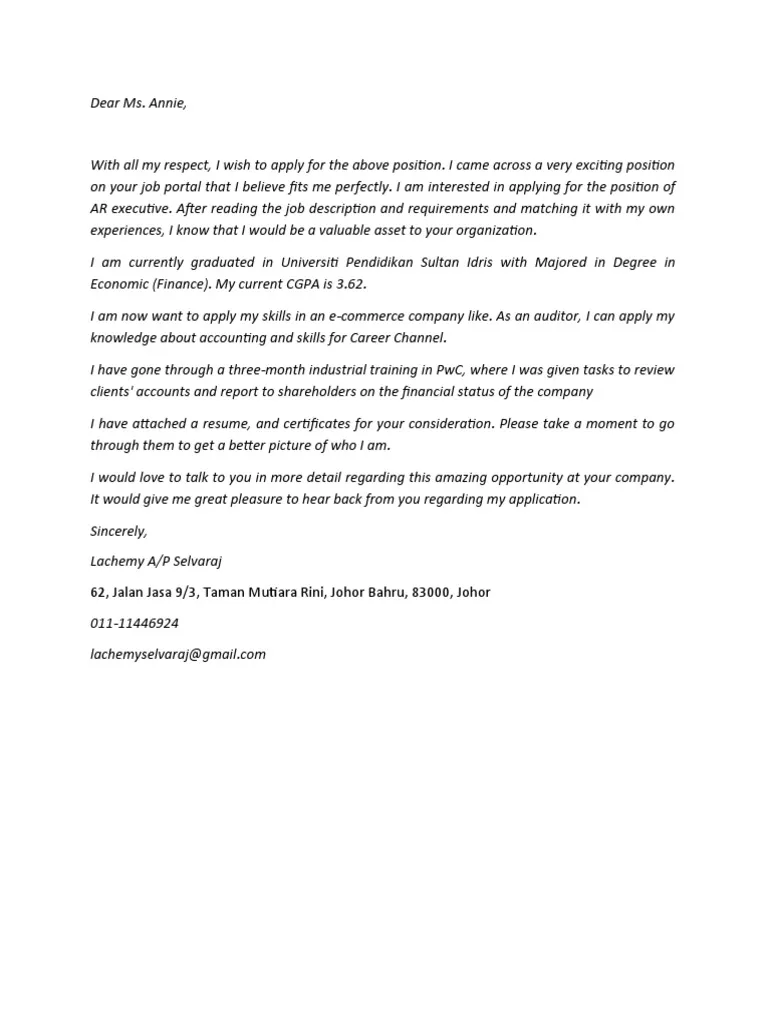In the competitive world of job applications, a well-crafted cover letter is your secret weapon. It’s more than just a formality; it’s your first opportunity to make a strong impression, showcasing your personality, skills, and enthusiasm for the role. Unlike a resume, which provides a snapshot of your experience, a cover letter allows you to tell a story, connecting your qualifications to the specific requirements of the job. This guide provides cover letter samples and insights to help you navigate the job application process with confidence.
Why Cover Letters Are Essential for Your Job Application
A cover letter provides an opportunity to personalize your application. It allows you to express your enthusiasm for the specific role and company. While a resume offers a summary of your experience and qualifications, a cover letter helps you tell a story, connecting your skills and experiences to the job requirements. It allows you to articulate your career goals and why you are a good fit for the position and the company culture. This can set you apart from other candidates who might only submit a resume.
Cover Letter Fundamentals
Before diving into the samples, it’s important to understand the basic structure of a cover letter. Your letter should begin with your contact information, followed by the date and the hiring manager’s information. The body of the letter typically includes an introduction, a few paragraphs highlighting your relevant skills and experiences, and a conclusion expressing your interest and gratitude. The tone of the letter should be professional, enthusiastic, and tailored to the specific job and company.
Formatting Your Cover Letter
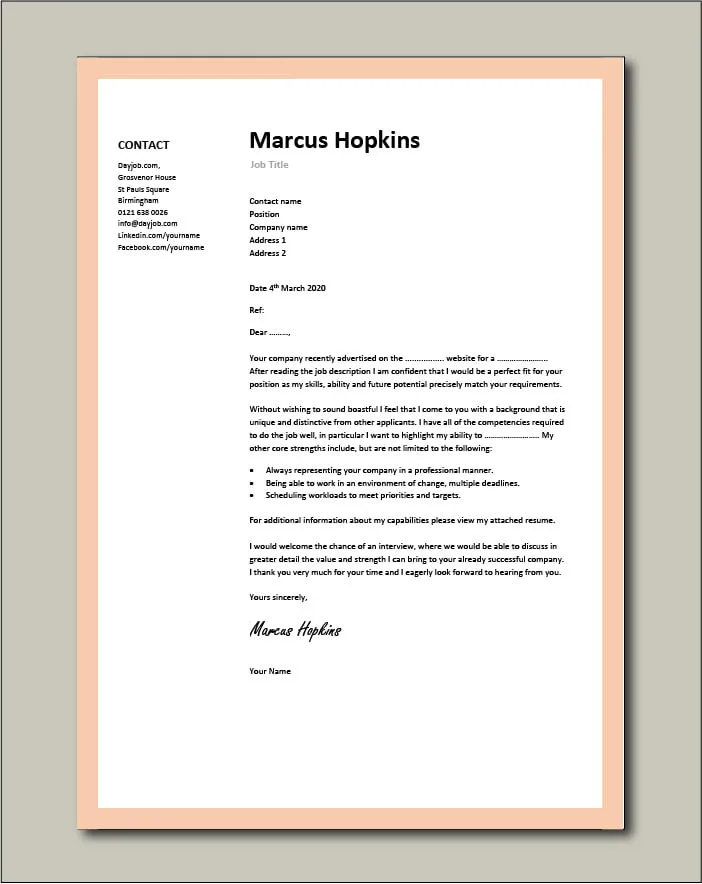
Proper formatting is crucial for making a positive impression. Use a professional font like Times New Roman, Arial, or Calibri, and maintain a consistent font size (11 or 12 points). Keep the margins at 1 inch on all sides. The letter should be single-spaced with a space between paragraphs. Use clear and concise language, avoiding jargon and overly complex sentences. Ensure your letter is free of grammatical errors and typos, as these can immediately detract from your application. The overall layout should be clean and easy to read, reflecting your attention to detail.
Key Elements to Include in Your Cover Letter
A strong cover letter should include several key elements. Start with a compelling introduction that grabs the reader’s attention and states the position you are applying for. In the body, highlight your most relevant skills and experiences, using specific examples to demonstrate your accomplishments. Quantify your achievements whenever possible; for example, instead of saying ‘managed projects’, say ‘managed projects resulting in a 15% increase in efficiency’. Show that you understand the company’s needs and explain how you can help them achieve their goals. End with a call to action, expressing your interest in an interview and thanking the reader for their time and consideration.
Cover Letter Samples for Various Job Applications
Here are seven different cover letter samples tailored to various scenarios. These samples are designed to provide you with a range of options, allowing you to customize your cover letter to best suit your specific needs and the requirements of the job you’re applying for. Remember, the key to a successful cover letter is to make it your own, reflecting your unique qualifications and enthusiasm.
Sample 1 Entry-Level Cover Letter
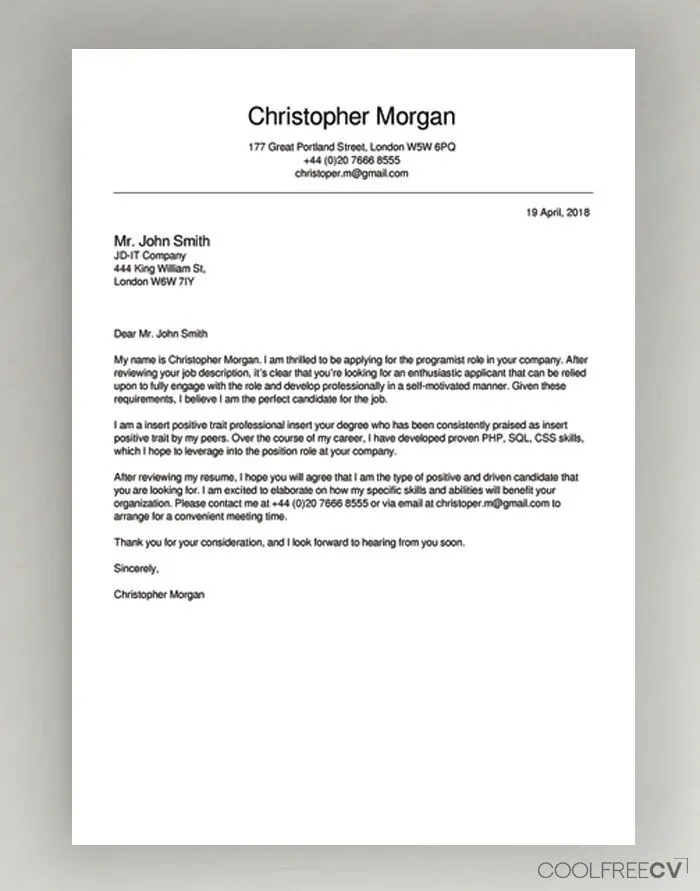
This sample is ideal for recent graduates or those with limited work experience. It focuses on academic achievements, internships, and any relevant skills or projects. The tone should be enthusiastic and highlight your eagerness to learn and contribute. Showcase your soft skills, like communication, teamwork, and problem-solving. Even without extensive experience, you can demonstrate your potential by highlighting your transferable skills and your understanding of the role.
Sample 2 Professional Cover Letter
A professional cover letter should highlight your career accomplishments and demonstrate your value to the company. Focus on your relevant experience, quantifiable results, and leadership skills. Tailor the letter to the specific job, emphasizing the skills and experiences most relevant to the role. The tone should be confident and professional, reflecting your experience and expertise. Use this sample to showcase your ability to solve problems, lead teams, and contribute to the company’s success.
Sample 3 Cover Letter for a Specific Role
This sample focuses on how you can meet the specific requirements of a job by precisely aligning your skills and experience. This means carefully reviewing the job description and addressing each key responsibility or qualification. Use the language and keywords from the job posting. Demonstrate your understanding of the role and your ability to excel in it. Quantify your achievements using specific examples to demonstrate your expertise. This targeted approach shows the employer that you have carefully considered the role and are the right fit.
Sample 4 Cover Letter for a Career Change
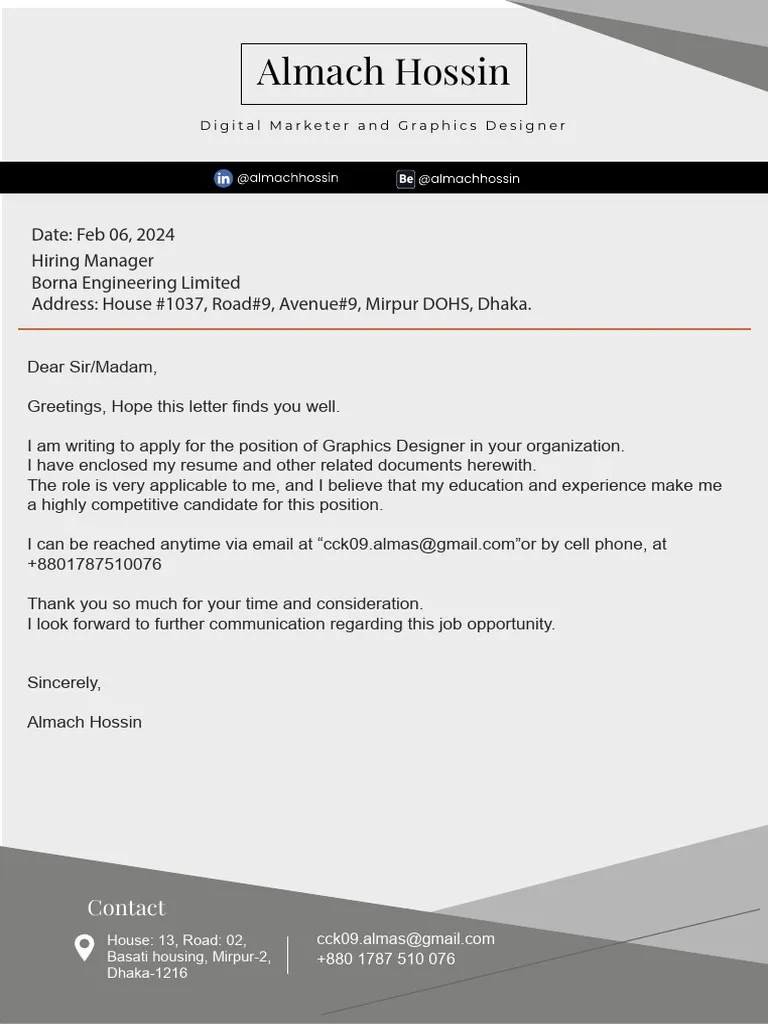
When changing careers, your cover letter becomes even more important. Explain your motivation for the change and emphasize the transferable skills you have. Highlight experiences and achievements that are relevant to the new role, even if they are from a different field. Address any gaps in your experience. Your cover letter should focus on your potential and adaptability. Show how your diverse experiences make you a valuable candidate.
Sample 5 Cover Letter Highlighting Skills
If you’re applying for a role where specific skills are essential, this sample will help you highlight your key strengths. Provide detailed examples of how you’ve used these skills in past roles to achieve specific results. Quantify your achievements whenever possible. Use the STAR method (Situation, Task, Action, Result) to provide context and make your accomplishments more impactful. This approach allows you to create a compelling narrative. You can also mention certifications, and training, and any other relevant qualifications.
Sample 6 Cover Letter Addressing a Gap in Employment
If you have a gap in your employment history, this sample will help you address it directly and honestly. Briefly explain the reason for the gap, such as taking time off for personal reasons, pursuing further education, or dealing with health issues. Focus on what you did during the gap and how it helped you grow and develop. Emphasize any skills gained or initiatives taken during that time. Frame the gap as a positive experience, highlighting your resilience, adaptability, and willingness to learn.
Sample 7 Cover Letter to Follow Up After Applying
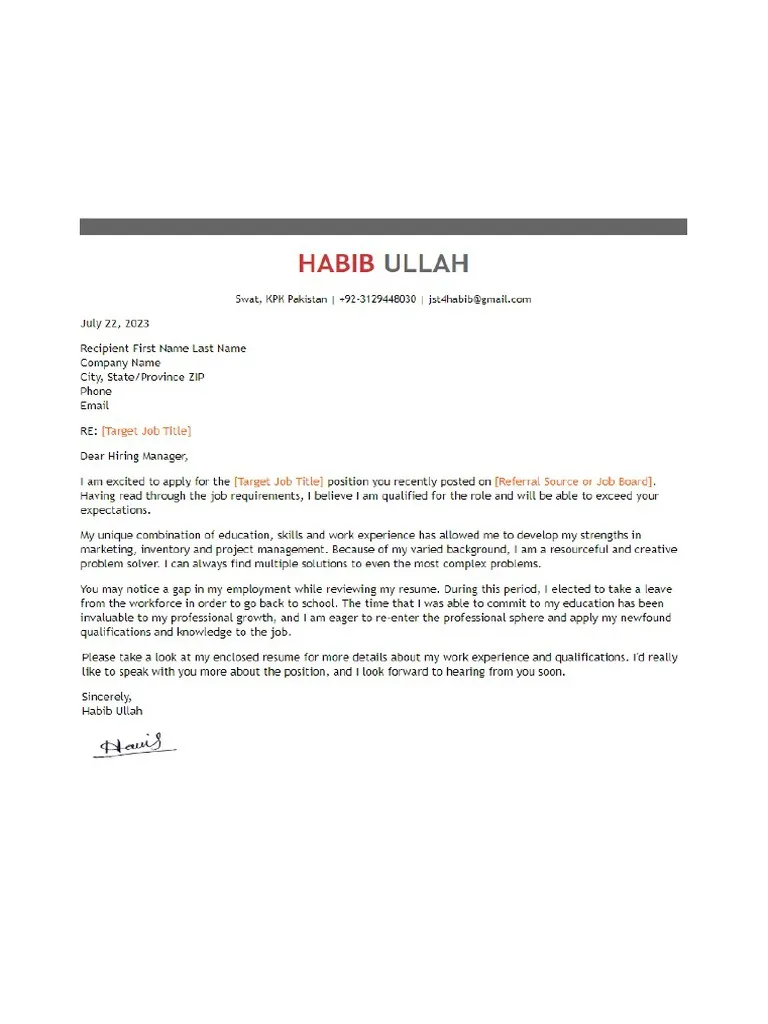
After submitting your application, a follow-up cover letter can help you stay top-of-mind. This sample is to send a thank-you note to the recruiter, expressing your continued interest in the role. Reiterate your qualifications and reiterate your enthusiasm, without being too persistent. Be sure to include the job title and company, and the original date you submitted your application. Briefly, restate your key qualifications and express your interest in the role, without being pushy.
Tips for Writing a Compelling Cover Letter
To maximize the impact of your cover letter, consider these tips. Always customize your cover letter for each job application. Generic cover letters are easily recognizable and less likely to impress. Research the company and tailor your letter to their specific needs and values. This demonstrates your genuine interest and attention to detail. Proofread your letter carefully to eliminate any errors in grammar or spelling. A polished cover letter is a reflection of your professionalism and attention to detail.
Tailoring Your Cover Letter to the Job Description
The most effective cover letters are those that directly address the requirements outlined in the job description. Carefully read the job posting and identify the key skills, qualifications, and experiences the employer is seeking. Then, use your cover letter to show how your background aligns with these requirements. Provide specific examples of how you have demonstrated these skills in previous roles. Be precise and avoid generic statements. Show, don’t tell. Highlight your understanding of the role and your ability to excel in it.
Highlighting Your Achievements and Skills
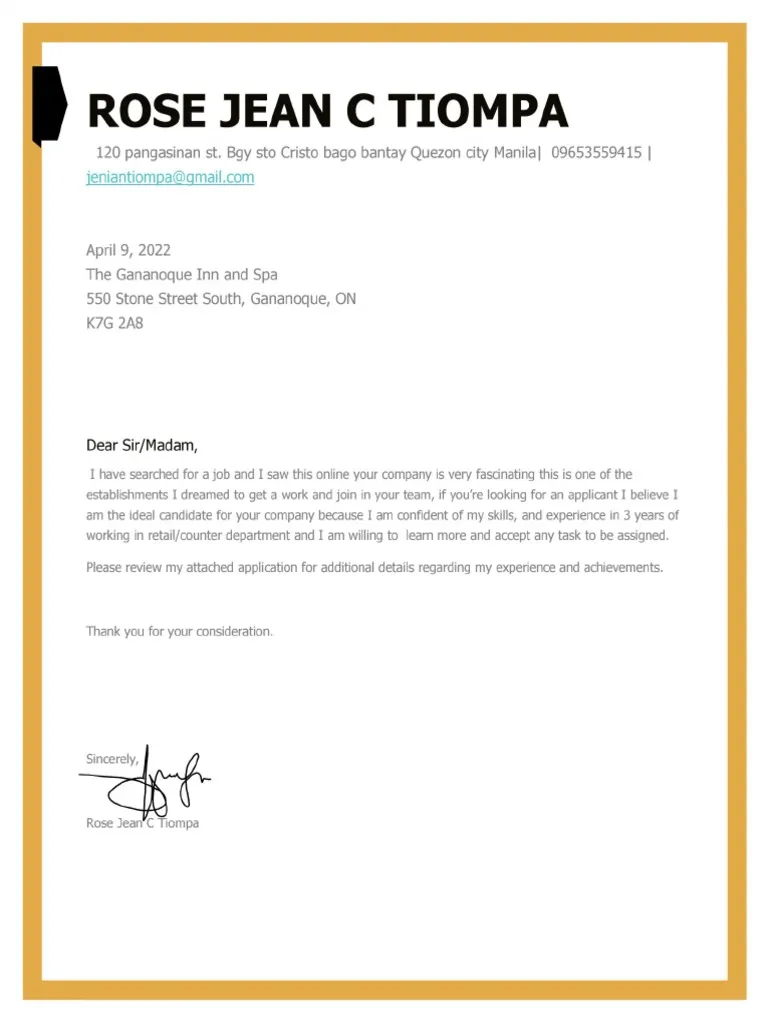
Showcase your achievements and skills effectively. Use action verbs to describe your accomplishments and quantify your results whenever possible. For example, instead of saying ‘Managed projects’, you could say ‘Managed projects resulting in a 15% reduction in costs’. Provide specific examples to support your claims. Describe the situation, the actions you took, and the results you achieved. Use the STAR method to structure your examples, making them more compelling and memorable. Show how your skills and experience align with the job requirements.
Using Action Verbs Effectively
Action verbs bring your cover letter to life. Start your sentences with strong verbs that describe your accomplishments. Examples include ‘Spearheaded’, ‘Managed’, ‘Developed’, ‘Implemented’, ‘Increased’, ‘Reduced’, and ‘Achieved’. Avoid passive language and vague statements. Use these verbs to emphasize your proactive approach and your ability to take initiative. Choosing the right action verbs makes your cover letter more dynamic and more engaging to read. This will also provide a clear view of your experiences and responsibilities.
Proofreading and Editing Your Cover Letter
Always proofread and edit your cover letter before submitting it. Errors in grammar, spelling, or punctuation can undermine your credibility. Use a spell-checker and grammar-checker, but also read your letter carefully to catch any errors these tools might miss. Have someone else review your letter. A fresh pair of eyes can often spot mistakes that you might have missed. Make sure your cover letter is well-formatted and easy to read. A polished cover letter demonstrates professionalism and attention to detail.
Conclusion Importance of a Cover Letter
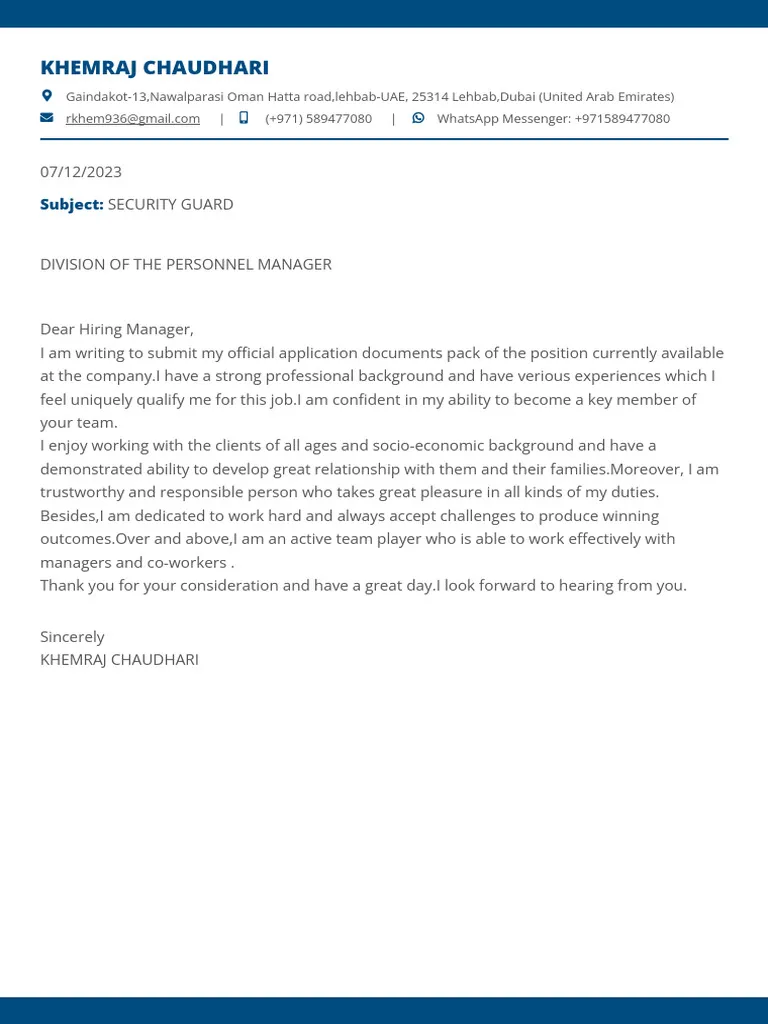
A well-crafted cover letter is your key to standing out in the competitive job market. By following these guidelines, using cover letter samples, and tailoring your letter to each specific job application, you can significantly increase your chances of landing an interview. Remember to highlight your skills, achievements, and enthusiasm for the role. Proofread carefully and present your best self. Using cover letter samples as your guide, you can showcase your unique qualifications and make a lasting impression on potential employers.
